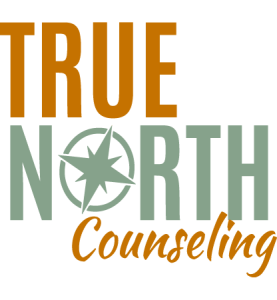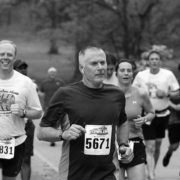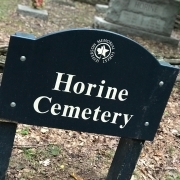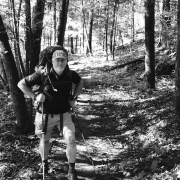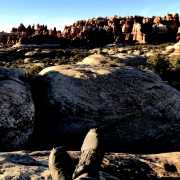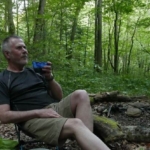It’s Time to Take it to the Streets | Healthy Aging Series: S11 E19
“I am a jogger!” says no one today.
OK, there was a time, many years ago that I referred to myself as a jogger. In 1978, I was attending college in Portland, Oregon and started jogging. Prior to that, I hadn’t even thought about jogging.
I was a Long Jumper in high school and ran the 220-yard Dash, I guess they called it a Dash.
Then in the Air Force, we did physical training in basic, but never after that. Mind you, I walked a lot, especially in the Air Force.
When I was stationed at Osan Airbase in Korea, I would walk ammo depots off the base with my dog, “Static.” I’m not sure how many miles I would walk during the midnight shift, but it was a lot.
I walked a lot at Rickenbacker Air Force Base, on the flight line, when I was guarding KC 135’s. That was a lot of walking.
So I got out of the Air Force in decent shape, but then came college and of course you know what next, weight gain.
It was about this time that I picked up Kenneth Cooper’s book, “Aerobics,” and I started jogging. Later I picked up Jim Fixx’s book, “The Complete Book of Running,” which came out in 1977. Cooper’s book preceded that by 10 years.
And so I started jogging. That’s what we called it in the 70s. There was a golf course down the street from our apartment that had a Vita Course. It was a 2-mile mulched track that had body weight stations every 10th of a mile. I would run a bit, do push-ups, run a bit, do pull-ups, run a bit, do squats, and so on.
After graduation from college, I moved to West Texas and joined my first running club and ran my first race called “The Jingle Bells Run,” an 8 miler.
I quit calling myself a jogger and started calling myself a runner. Of course, life happens.
I moved to Louisville for Graduate School, stopped running and gained weight. In Graduate school I reread Cooper’s book and lots of other books about running. And I started running again.
I’ve probably run ten 1/2 marathons, five 10 miles, two marathons and lots of trail running.
There are tons, hundreds of races to run today, and I’ve run most of them.
Turkey trots,
Hangover, classic, which is a 10 Miler on January 1,
Years ago, there were Duathlons. Running and cycling as a part of your race.
There are triathlons of every distance, including the Iron Man, which I’ve never run.
There is the Triple Crown of Races here in Louisville, which includes a 5K, 10K, and 10 Miler. I’ve run all of them.
This city is full of runners, mostly inspired by the revolution that was started in the late 60s by Kenneth Cooper and people like Jim Fixx.
To give you some idea of how things have changed since the 70s, the Derby Marathon was first run in 1974 and had less than 1000 runners. Last year over 10,000 people ran in Louisville on that chilly morning.
How did this revolution start?
I’ve alluded to something that happened in the 60s and 70s that sparked a flame that has resulted in over a half million people running marathons each year.
Social media is big in today’s world, but it wasn’t in the 60s.
TV was big.
But the Running Revolution didn’t start by word of mouth. It was not started as Clickbait or a big marketing scheme.
It started because a few people wrote books. Books really meant something back in the 60s and 70s. Think, “Jonathan Livingston Seagull.”
Dr. Kenneth Cooper wrote a book in 1968 called “Aerobics.”
He coined the word “aerobics,” and it’s now a part of our dictionary.
And partly because of that book, people started running. Other things happened. Jim Ryan as a teenager broke the four-minute mile. Frank Shorter, an American, won the Marathon in the 1972 Summer Olympics.
Revolutions are started by people. People with ideas. People who know how to hit just that right spot and then they tell their story.
That’s what Kenneth Cooper did in 1968 when he wrote the book “Aerobics.” His book sold 30 million copies. Dr. Cooper served as a physician in the military for 13 years and he asked a question. How can we prevent cardiovascular disease and extend longevity?
At 29, he had a cardiac event while water skiing, making fitness a personal issue for him. He lost weight, started running, and a year later ran his first marathon.
Here’s a question that Cooper asked and answered in his book: How much?
Bear with me as I quote a rather lengthy section of his book:
“The word fitness is applied to physical condition. Conditioning has been as defined, a confusing term. For example, exactly where the ability to do 40 push-ups or 60 sit-ups or 20 chin ups fits into this concept of general fitness is not well understood. To some people fitness connotes merely freedom from disease. Others measure fitness by the degree of muscular development, by agility, or by proficiency in weightlifting, gymnastics, skiing, or boxing. Still, others include psychological well-being as an essential element. Fitness is a desirable state for anyone who wants to lead a successful and productive life and realize his fullest potential. It deserves a concise definition. A high level of general fitness notes, freedom from disease, of course, and psychological well-being as well. But other components are also important reasonable muscular development, functional flexibility of the joints, adequate vital capacity of the lungs, reverse capacity of the heart and blood vessels, and stamina must all be included, with stamina in this context, meaning the capacity to endure exertion and stressful physical activity as a reflection of good cardio, pulmonary reserve.”
The question “How much?” relates to how much exercise, and here Cooper is going to talk about aerobic exercise, how much is enough in order to bring about that level of fitness?
And so he wrote his book “Aerobics” as the answer to that question.
My Aerobic Fitness
He developed a very simple system. Here’s how it works for me. I no longer run. I walk and hike, which are both aerobic exercises. If I walked 4 miles in one hour and I’m walking 15-minute miles, then I earn 10 points.
Cooper set 30 points as your weekly goal. If I do my walk three times a week I have done enough cardio for that week.
That doesn’t count the resistance training that I do and the other cardio activities that I do on a rowing machine, recumbent-exercise bike, or the climber that I have.
One hour three times weekly at the right intensity is all you need.
By right intensity, I mean Zone 2 or 3, which is having an average heart rate between 101-128. Not a stroll, but a good hard walk three times a week.
In 1978 or 79, I joined the running revolution. I read more books and continued stoking the revolutionary fire.
It isn’t just the books that stoked the fire. It is the joy of aerobics or cardio exercises.
Talk to any runner, backpacker, cyclist, triathlete, or swimmer, and they will tell you that they love it.
The Revolution Continues to this Day
Revolutionaries inspire revolution. I read Rich Rolls book, “Finding Ultra.” Roll was suffering from alcoholism and obesity, and he became one of the world’s finest ultramarathoners, and discovered himself, and inspired many other people.
Jeff Galloway, an American collegiate athlete and American Olympian in the 10,000 meters in 1972, in his book, Galloway’s Book on Running, credits Cooper for being an important part of the Running Revolution. “Cooper’s aim,” Galloway writes, “was to counteract the great lethargy and inactivity of most Americans by demonstrating the benefits of regular exercise. Most importantly, he showed how to do it. His points system gave even out of shape beginners a guide to exercise.”
I read Dr. Bob Arnot’s Guide to Turning Back the Clock, where he encouraged his readers to develop an athlete mindset.
I read “Younger Next Year,” by Chris Crowley and Henry Lodge, MD, and was inspired to make it a point to work out every day at least 45 minutes a day, and of course, quit eating crap.
Recently, I read Outlive: The Science and Art of Longevity, by Peter Attia, and was inspired to continue working on developing more muscle. He says that there are two biometrics that predict longevity, and one is VO2 max and the other is percentage of lean muscle mass. So, I work out on weights every week.
I read the biography of President Teddy Roosevelt entitled The Strenuous Life. Teddy Roosevelt died at a relatively young age, but that was due in large part to being the victim of a gunshot, which he survived, and his exploration of the Amazon rainforest, where he picked up all kinds of nasty bugs. But he promoted walking, and he walked every single day.
The running revolution continues!
And maybe, just maybe, I’ve inspired a few of you to join that revolution. I’ve inspired you to take to the streets!
I hope so.
